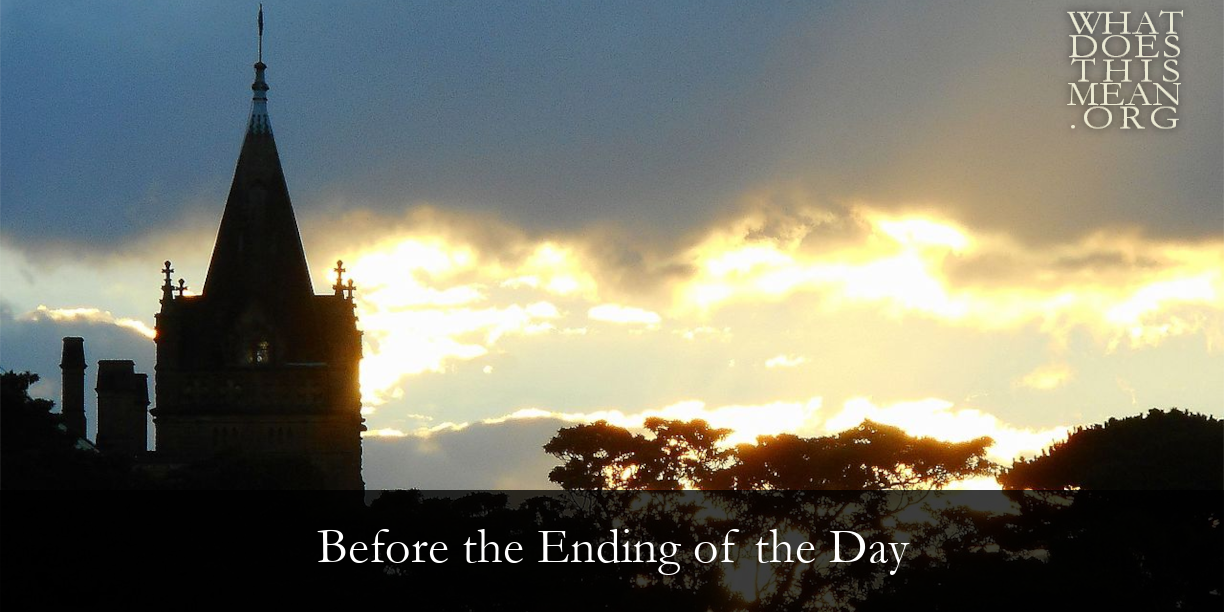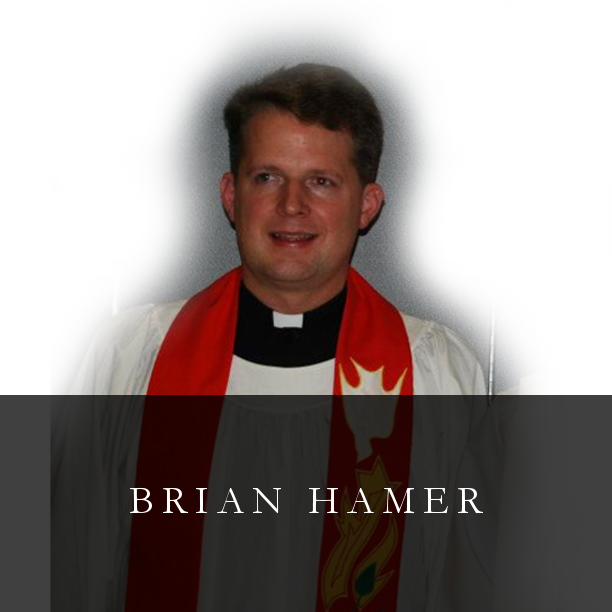Before the ending of the day, Creator of the world, we pray!
Thy grace and peace to us allow / And be our guard and keeper now.
From all the terrors of the night, From evil dreams, defend our sight;
Drive far away our wicked foe / That stain of sin we may now know.
O Father, this we ask be done / Through Jesus Christ, Thine only Son,
Who with the Holy Ghost and Thee / Both lives and reigns eternally. Amen.
The first stanza is addressed to the Creator at bedtime, fitting for the completion of the day and for sleep as a rehearsal for the sleep of death, followed by the final resurrection of all flesh. The words “grace and peace” recall the confession of sins at the beginning of the service, praying that God’s forgiveness in Christ would grant eternal and lasting peace at the end of the day and at the end of our life. Sean Daenzer, an ordained minister and chaplain of the Missouri Synod, writes, “While Compline was formerly a mishmash of invocations to the saints, the angels, and Mary, it is comforting that this hymn invokes the triune God so strongly and singularly as the only 'clemency' ('clementia') and aid against the ‘wicked foe’” (Lutheran Service Book Hymnal Companion, I:1405).
The English translation from the Latin original, adapted from John Mason Neale (1818–1866), phrases the second stanza as a deprecation (from the Latin deprecari, “to avert by prayer”) as the believer prays for protection from the temptations of Satan. Bad dreams and the anxieties of the day haunt believer and unbeliever alike as Satan offers the “stain of sin” (ne polluántur córpora means “pollutes the body”) with sin and misery and all manner of uncleanness. The Christian, however, meets this temptation not merely with the latest sleeping and relaxation techniques, but rather with a prayer for Christ to avert the powers of Satan and, in the words of Luther’s Evening Prayer, “Let the evil foe have no power over me.”
The final stanza is directed to God the Father, through the Son, by the Spirit. Here we ask that all the gifts of God would be done by the triune God for the believer. Building on Luther’s understanding of the Words of Institution as God’s work for us, Lutheran theologian Oswald Beyer (b. 1939) writes, “[E]very action of the triune God is a promise that gives and a gift that promises” (Theology the Lutheran Way, p. 91). How true this is for every gracious act and gift of the triune God, from conception to natural death! Beyer continues: “If it is true that we must rest from our work, die to the old self, to let God do his work, faith is primarily neither theory not practice, neither a speculative life (vita contemplative), nor an active life (vita active), but, to use Luther’s term for it, a receptive life (vita passive)” (p. 93).
The profundity and simplicity of this prayer was not lost on Thomas Tallis (ca. 1505–1585), who is no stranger to readers of “Lifted Voice.” He wrote multiple settings of this hymn. The following setting includes the chant for stanza 1, a chorale-like setting of stanza 2 that grows naturally out of the chant, and a return to the plain chant for stanza 3. Considering the monastic origins of the text, it seems fitting that it is sung here by a small, professional group of male voices, The Gesualdo Six.
Before listening to the hymn in a congregational setting, briefly consider some unique features of the tune. In contrast to the alleged quip by Emperor Joseph II that one of Mozart’s operas had “too many notes,” one friend of mine from the Midwest rightly calls this hymn the “three-note hymn,” after the three principal pitches: G-natural, A-natural, and B-natural. (A little quick math reveals a solitary F-sharp, but its token appearance is a mere leading tone, with little consequence.) Of the first 16 sung notes, 11 of them are G-natural. The B-natural only appears three times, serving as the musical high point of the tune. The melody gently rises and falls, pulses and propels seemingly on its own, almost begging to be sung without accompaniment. Moreover, the only melodic interval greater than a whole step is the minor third on the words “the world” (st. 1) followed by three B-naturals, before returning to the tonal center on G-natural. Perhaps you will agree with me that this hymn revels in the joy of simplicity?
In the following video, the restrained playing of the organ, the appropriate use of handbells, and the gentle soaring of the flute allow the singers, in the opening words of Compline, “to give thanks to the Lord” and to herald “[His] truth at the close of the day.”
Visit our dwellings, O Lord, and drive from them all the snares of the enemy; let Your holy angels dwell with us to preserve us in peace; and let Your blessing be on us always; through Jesus Christ, our Lord. Amen. (LSB p. 257)



 RSS Feed
RSS Feed
